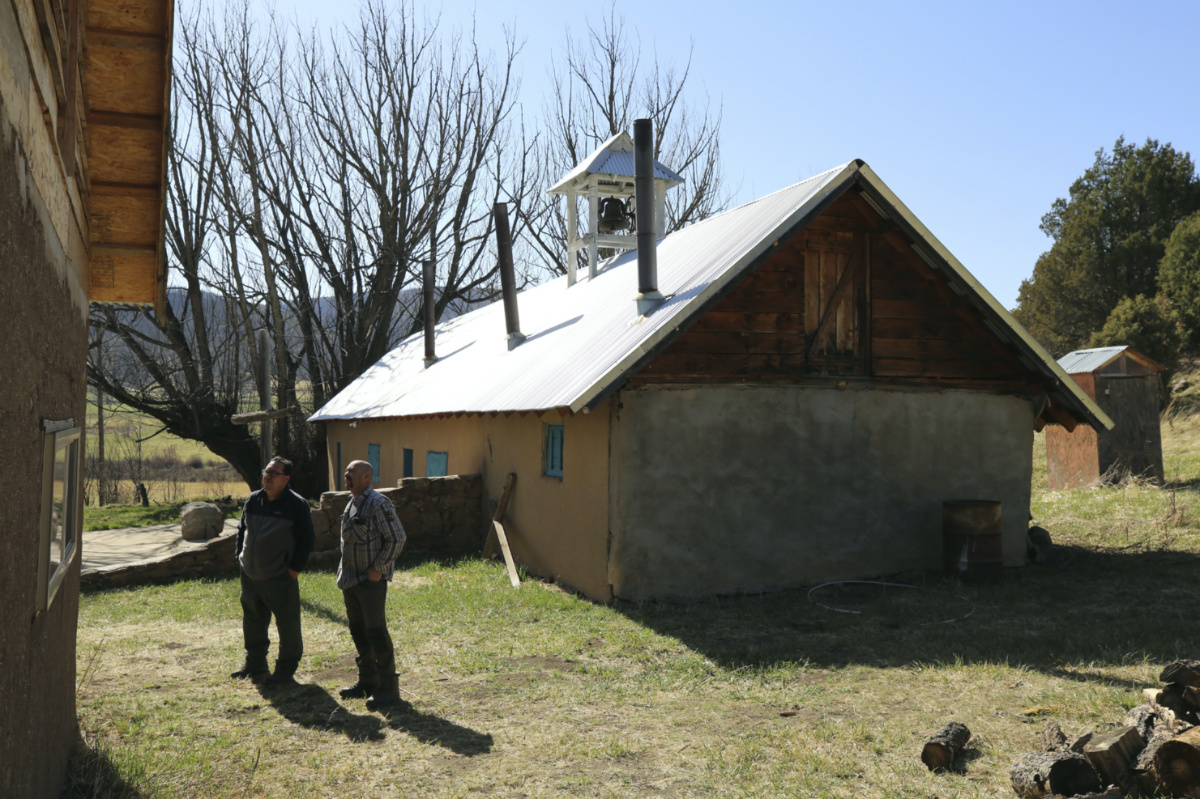
GIOVANNA DELL’ORTO, of Associated Press, reports on the role Catholic brotherhoods are playing in preserving a dialect which evolved from the mixing of Spanish and Indigenous languages…
Holman, New Mexico, US
AP
On a spring Saturday afternoon, two “hermanos” knelt to pray in the chapel of their Catholic brotherhood of St Isidore the Farmer, nestled by the pine forest outside this hamlet in a high mountain valley.
Fidel Trujillo and Leo Paul Pacheco’s words resounded in New Mexican Spanish, a unique dialect that evolved through the mixing of medieval Spanish and Indigenous forms. The historic, endangered dialect is as central to these communities as their iconic adobe churches, and its best chance of survival might be through faith, too.

‘Hermanos’ Fidel Trujillo, left, and Leo Paul Pacheco, look at the kitchen recently built with adobe next to the 1860s ‘morada’ de San Isidro, which is the main chapel and meeting point of their Catholic brotherhood, outside Holman, New Mexico, on Saturday, 15th April, 2023. New Mexican Spanish is as central to these communities’ identity as their iconic adobe churches, and its best chance of survival might be through faith, too. PICTURE: AP Photo/Giovanna Dell’Orto
“Prayers sung or recited are our sacred heritage,” said Gabriel Meléndez, a professor emeritus of American Studies with the University of New Mexico, who’s also a hermano. “When prayers are said in Spanish, they’re stronger. They connect us directly to people who came before us.”
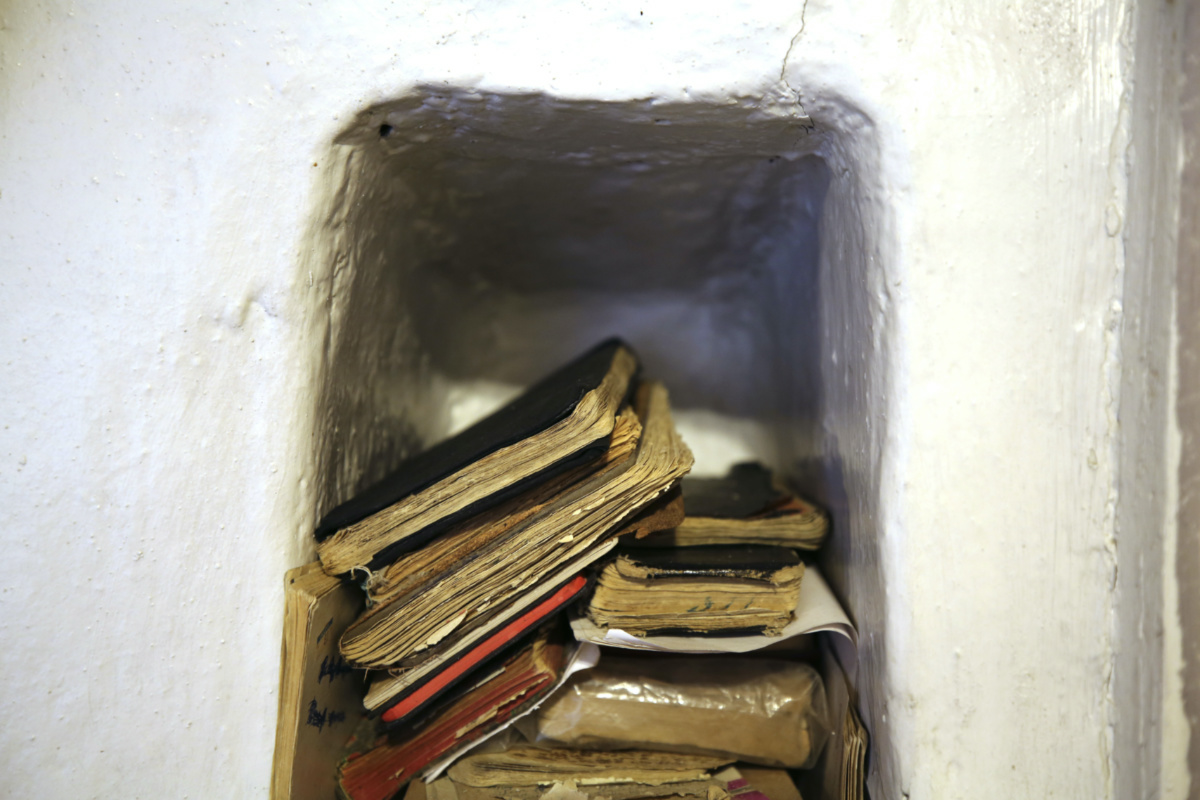
Handbooks of prayers and hymns, known as ‘cuadernos’, sit in a niche in the adobe wall of the morada de San Isidro, outside Holman, New Mexico, on Saturday, 15th April, 2023. PICTURE: AP Photo/Giovanna Dell’Orto.
“Prayers sung or recited are our sacred heritage. When prayers are said in Spanish, they’re stronger. They connect us directly to people who came before us.”
– Gabriel Meléndez, a professor emeritus of American Studies with the University of New Mexico.
Preserved mostly in devotions, particularly in humble “moradas” – as the brotherhoods’ chapels are called – built of mud and straw in rural communities across the northern reaches of the state, New Mexican Spanish is different from all other varieties of the language.
“Unlike most other forms of Spanish used in the US today, it’s not due to immigration in the last 100 years, but rooted back to the 1500s,” said Israel Sanz-Sánchez, a professor of languages at West Chester University in Pennsylvania who has researched the dialect.
Spanish explorers and missionaries first reached these valleys isolated between mountains, deserts and plains at the end of the 16th century. Pushed back south by the Pueblo Native Americans, they resettled a century later – and their language evolved to incorporate not only words carried from medieval Spain but also a mixture of expressions derived from Mexican Spanish, Native forms and eventually some English after the territory became part of the United States.
Removed from the centre of political and economic power for centuries, these villages preserved the dialect orally.
“You never heard English here,” said Felix López of growing up in the 1950s in Truchas, a ridgetop village between Santa Fe and Taos, where this master “santero” – an artist specialising in devotional art – has been helping preserve the 1760s Holy Mission church.
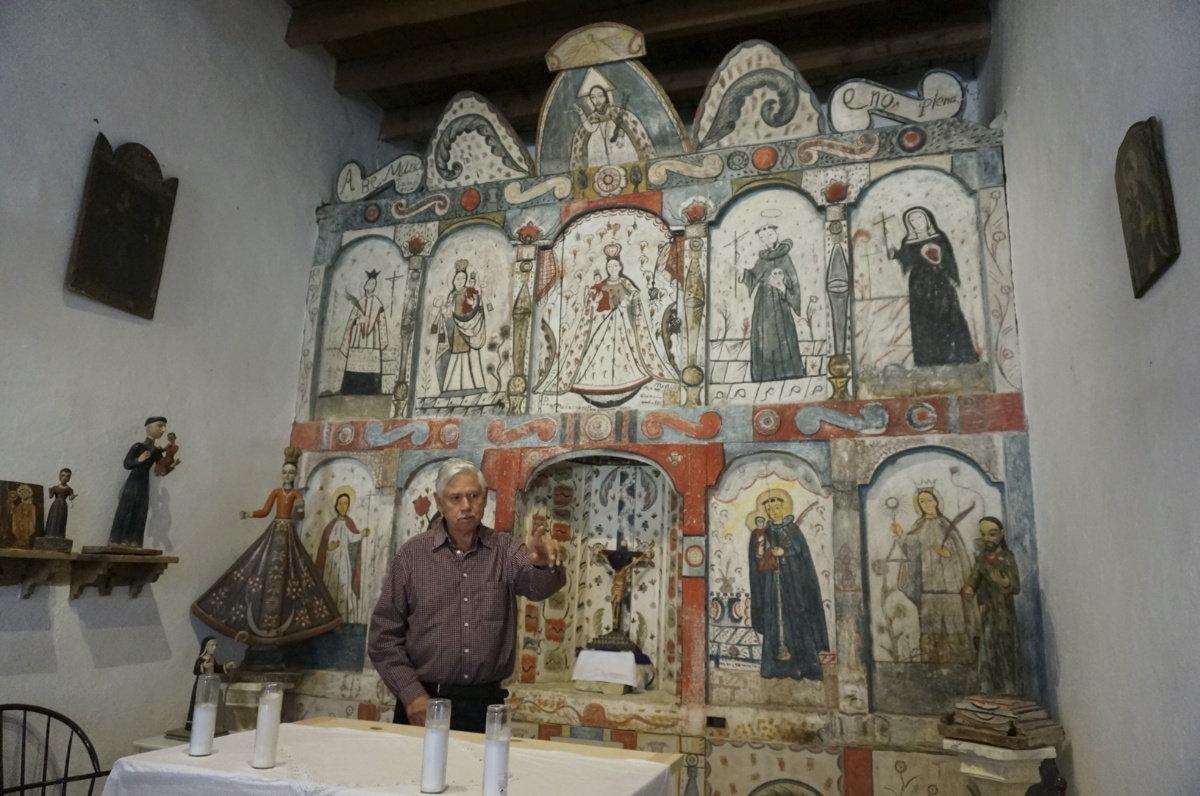
Master santero Felix Lopez – an artist trained in New Mexico’s centuries-old tradition of religious sculpture and painting – speaks during an interview while standing in front of the 1810s ‘reredo’ or altarpiece he cleaned and preserved in the Holy Rosary Mission Church in Truchas, New Mexico, on Sunday, 16th April, 2023. “You never heard English here,” said Lopez of growing up in the 1950s in Truchas, a ridgetop village between Santa Fe and Taos. PICTURE: AP Photo/Giovanna Dell’Orto.
But by the mid-20th century, the push to promote schooling in English led many educators to correct students who used New Mexican Spanish’s idiosyncratic mix of grammar, pronunciation and vocabulary, said Damián Vergara Wilson, a professor of Spanish at the University of New Mexico.
He has been working on teaching Spanish not as foreign but as a heritage language that has developed into something uniquely New Mexican.
It contains some words from medieval Spanish, but it also includes pronunciations that developed in New Mexico’s villages and words unique to its geographical and historical place at a crossroads of American civilizations. There are several words for turkey, for instance, including an anglicised one used in the context of Thanksgiving.
With such code-switching sometimes disparaged in education and among the public, younger generations often stick to English only or learn contemporary Spanish, especially as spoken in Mexico, with which the state shares a border. That leads many villagers to worry about being able to preserve New Mexican Spanish.
“The dialect we speak is dying out. We’re the last generation that learned it as a first language,” said Angelo Sandoval, 45, who serves as the “mayordomo” or caretaker of the 1830s San Antonio Church in Cordova, a village just down the valley from Truchas.
Its best chance for survival is prayer. Traditional devotions have been passed down through generations by hermanos, easily memorized because of their ballad-style rhyming. Sometimes they are transcribed into notebooks called “cuadernos.” In an adobe niche in a chapel in Holman, some of the handwritten notebooks are 120-years-old.
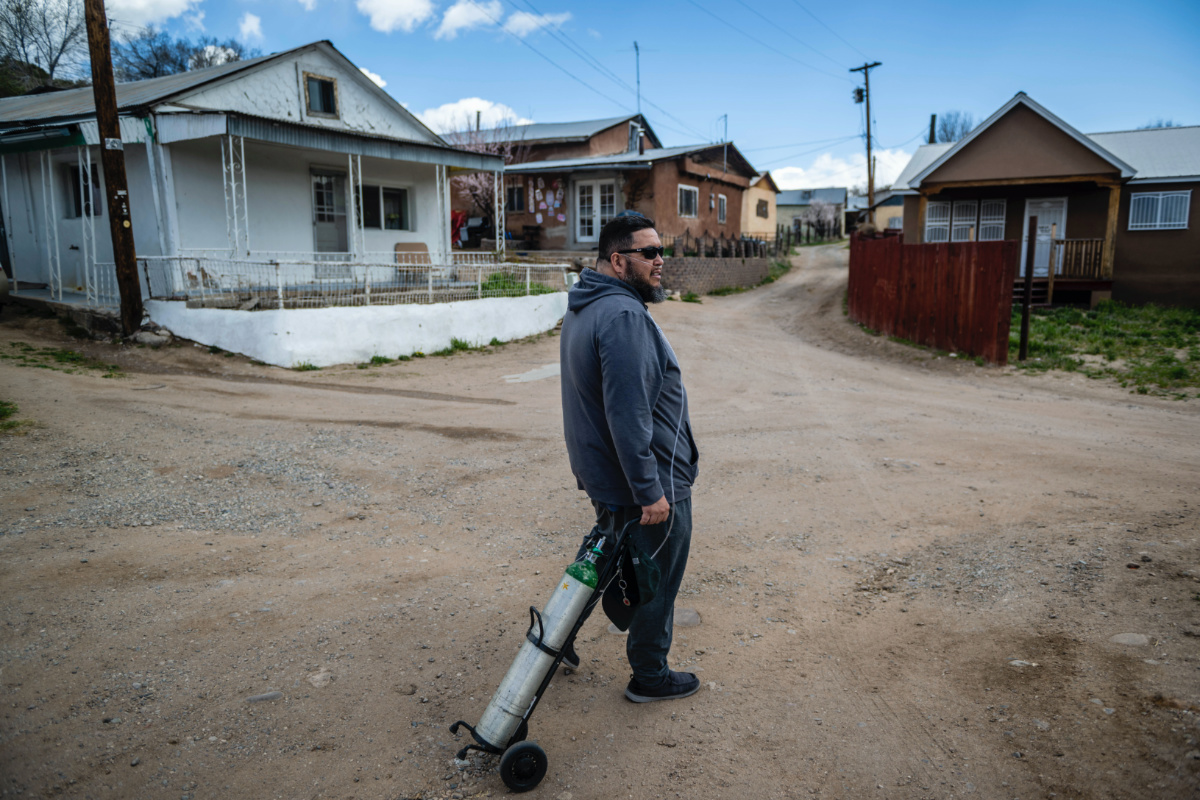
Angelo Sandoval, ‘mayordormo’ or caretaker of the 1830s San Antonio Church, stands on a dirt road in Cordova, New Mexico, on Friday, 14th April, 2023. “The dialect we speak is dying out. We’re the last generation that learned it as first language,” said Sandoval, 45. PICTURE: AP Photo/Roberto E Rosales.
Even in larger cities, people often request prayers in New Mexican Spanish for special occasions, like rosaries for the deceased or novenas for the holidays.
In Santa Fe, the prayer to the widely venerated statue of Our Lady of Peace contains some of the original Spanish terminology, such as “Sacratisimo Hijo” for the “most holy Son,” said Bernadette Lucero, director, curator and archivist for the Archdiocese of Santa Fe.
A nearly century-old women’s folklore society – Sociedad Folklórica de Nuevo México – also regularly practices the dialect for their hymns and nine-day “novenas” prayers to baby Jesus, Lucero added.
We rely on our readers to fund Sight's work - become a financial supporter today!
For more information, head to our Subscriber's page.
In the small town of Bernalillo, where the outskirts of Albuquerque fade into vast mesas, the mayordomos of San Lorenzo also preserve the dialect in their prayers and annual celebrations.
“When we sing an old ‘alabado,’ we can trace who wrote that,” said Santiago Montoya of the Catholic praise (in Spanish, “alabar”) hymns that have been passed down through New Mexican brotherhoods.
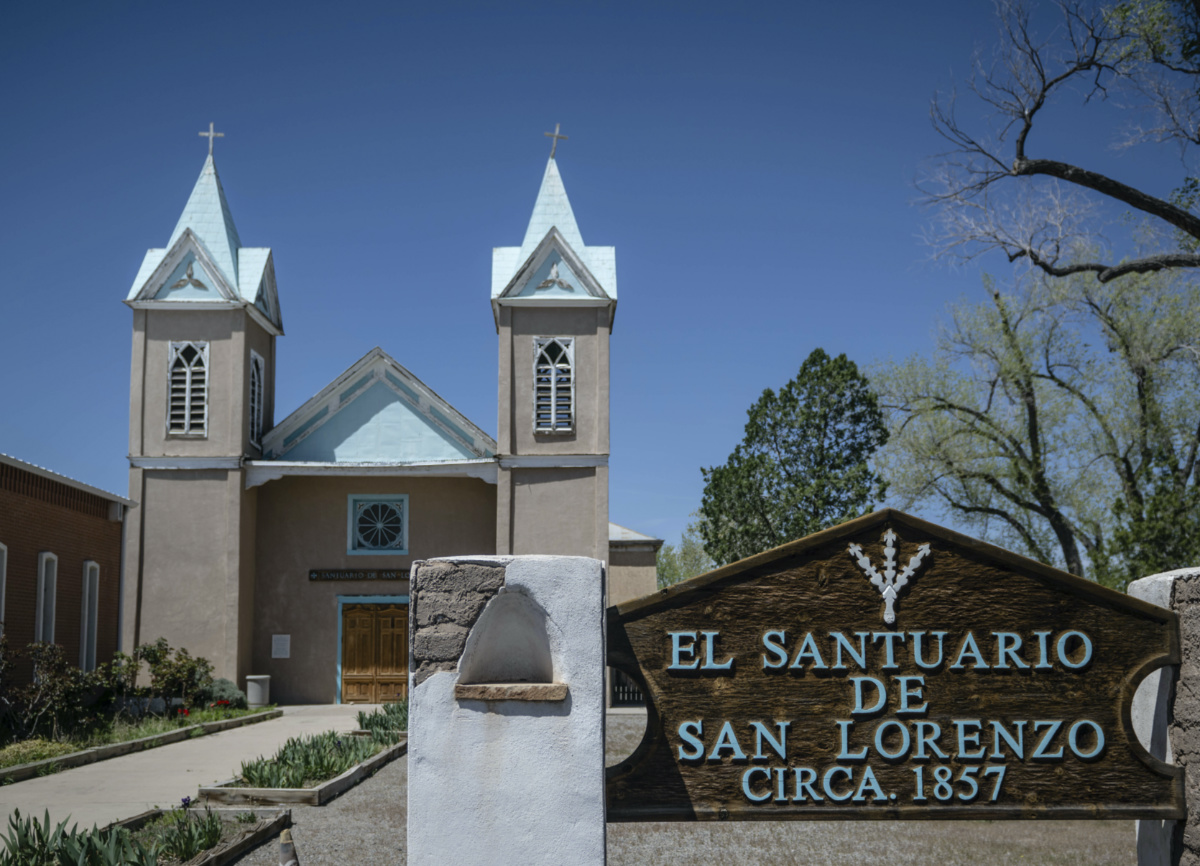
An exterior view of El Santuario de San Lorenzo in Bernalillo, New Mexico, on Monday, 17th April, 2023. The ‘mayordomos’ or caretakers of San Lorenzo – both the historic sanctuary of St Lawrence and the image of the saint that one family hosts each year in its home – preserve New Mexican Spanish in their prayers and annual celebrations. PICTURE: AP Photo/Roberto E Rosales.
For 23 years, Montoya and his sister have been the mayordomos of San Lorenzo, a church that was constructed in the mid-19th century with four-feet-wide adobe walls. The community fought to save it when a bigger, modern church was built next door.
But he’s also a “rezador,” reciting or singing the rosary – a prayer consisting of sets of Hail Marys called “decades” – which he does in the community and particularly for the deceased. He insists on using New Mexican Spanish even if the families only speak English.
“I tell them, ’I’ll do three ‘decades’ in English, but let’s teach the kids,’” Montoya said.






